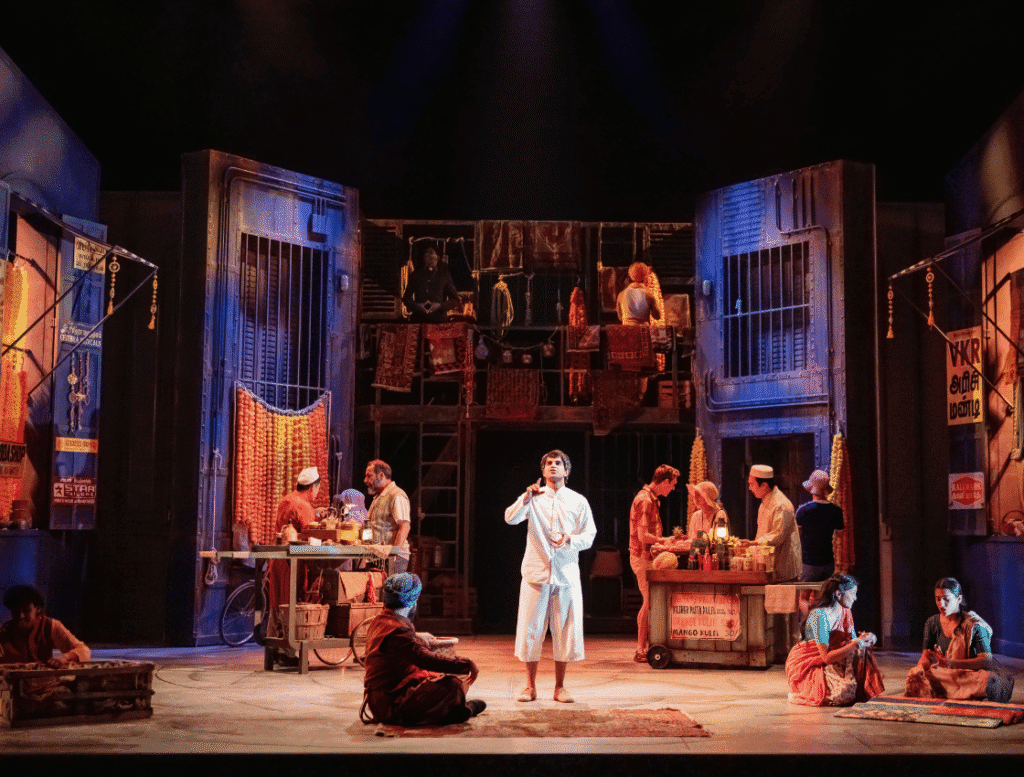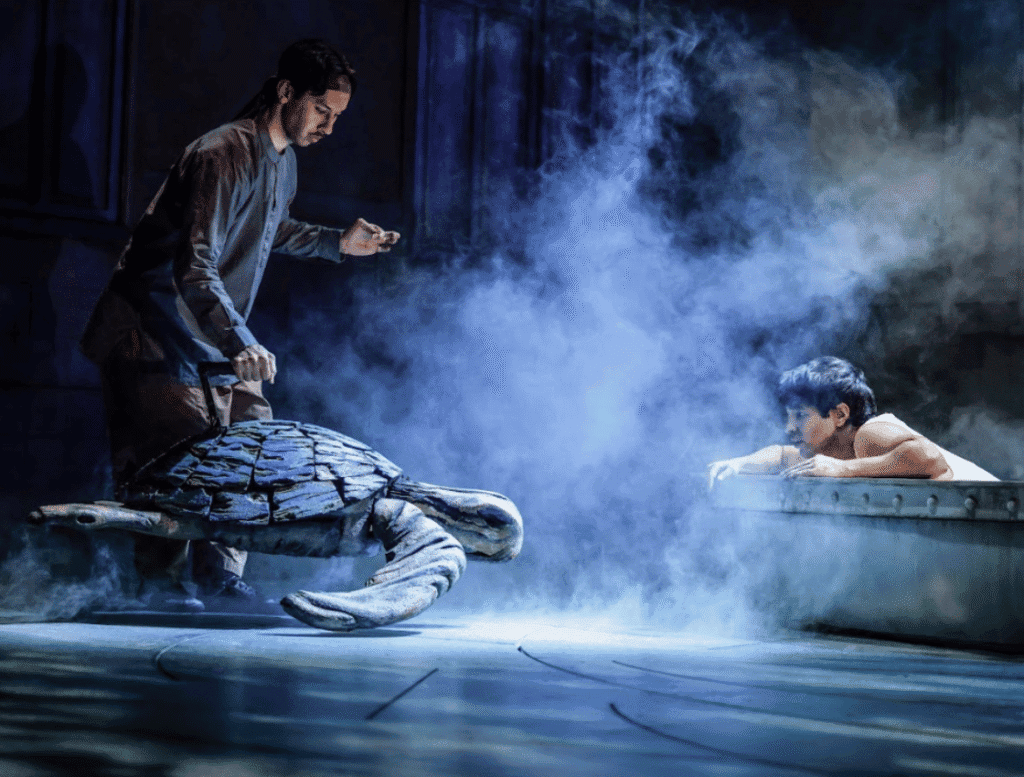The natural order of popular theater tends to follow this formula: Find a best-selling book, turn it into a hit film, then get a top lyricist and composer to create the score for a smash Broadway musical. Yann Martel’s uniquely philosophical treatise/adventure story of a novel, Life of Pi, became a worldwide sensation in 2001 (with sales of over ten million). A successful, visually striking film, directed by Ang Lee, followed in 2012. But the three-Tony-winning theatrical version of LIFE OF PI, which opened on Broadway in 2023 to enthusiastic acclaim by critics and audiences alike, and whose National Tour is now playing at the Au-Rene Theater of Broward Center (only from October 21 – 26), is no musical.
There is great background music, of course, at times loud and pulsating for increased dramatic tension, but don’t expect spontaneous outbursts in song. There are many touching moments, too – especially during lighter, Patel family and neighborhood scenes in smalltown Pondicherry, India – that are instantly, humorously recognizable. But here human stars share the stage with zoo animals, birds, turtles and fish. And these wildlife creatures, through the amazing art of puppetry, often eclipse their human counterparts – tugging at our hearts in sympathy or frightening and horrifying us with their menace and violent instincts for survival.
British actress and award-winning writer Lolita Chakrabarti adapted the novel for our play that’s more amazing spectacle and immersive emotional experience than typical shows. Life of Pi blasts its audience with great joy, intense fear, and a pervading sense of wonder – all while gaining fresh insights into our nature and our place in the world. The playwright managed to distill the book into a gripping two-hour tale that opens with a bare hospital bed in Mexico, 1978.
Spanish-speaking nurses try to get their patient to eat, but we only see his arms as they reach out for treats from where he’s hiding under the bed. The patient offers one candy to the “nice” lady from the Canadian Embassy who’d come to visit. She’s accompanied by a callous investigator for the Japanese transport company that owns the large cargo ship bound for Canada on which Pi, his family, and all their crated zoo animals sailed after finally obtaining visas to leave their home in increasingly dangerous India. The huge vessel had been missing for over 227 days, while its lone survivor, Pi Patel, drifted on a small lifeboat in the Pacific Ocean.

As he convalesces from the brink of death, and at the insistence of the Japanese investigator, 17-year-old Pi begins to tell his story, including parts that leave him writhing in agony. With good reason, as his entire beloved nuclear family – zoo-keeper father, warm and helpful mother, and brilliant mathematician older sister – had perished in the violent storm that sunk the ship. Leaving only Pi and his most hated animal at the zoo, a Bengal tiger named Richard Parker, to survive together on a small boat (and then the tiger abandons his human companion by disappearing into the jungle as soon as they reach dry land). Young Pi, in all facets of his complex personality – from innocence and tenderness to moral questioning, red hot anger, forgiveness, and amazing faith and determination – is richly and convincingly portrayed by Taha Mandviwala.
We get Pi’s story in animated flashback scenes involving human activity … but most profoundly and mesmerizingly in his interactions with the animals in his father’s zoo. For all the life-sized creatures, big and small – from a towering giraffe to playful goat, a zebra, hyena, beautiful swimming turtle and fish, and an orangutan named Orange Juice – we can thank the brilliant puppetry & movement direction of Finn Caldwell, who’s also responsible for puppet design, along with Nick Barnes.
I admit upon first seeing photos of these huge and multi-sectioned-for-dynamic movement rod puppets, where their human handlers (“puppeteers”) were clearly visible (even often using facial expressions to mimic the action), I wondered if viewing the bones of the puppetry process – no matter how clever and fascinating – would interfere with my immersion in the story. I had my answer within minutes, and it’s a resounding, NO, not an issue at all. The puppeteers (eight for the tiger alone!) were so adept at breathing life and specific character into their charge animals, moving as fluidly as in a choreographed dance, that my mind easily ignored the people manipulating the puppets in order to simply experience all the “feels” projected by these incredibly lifelike beasts.





